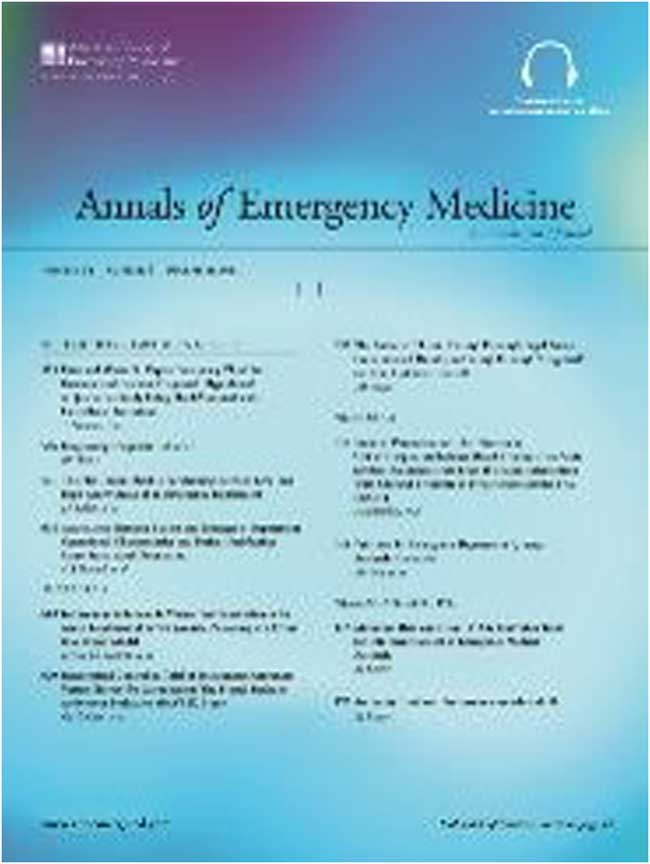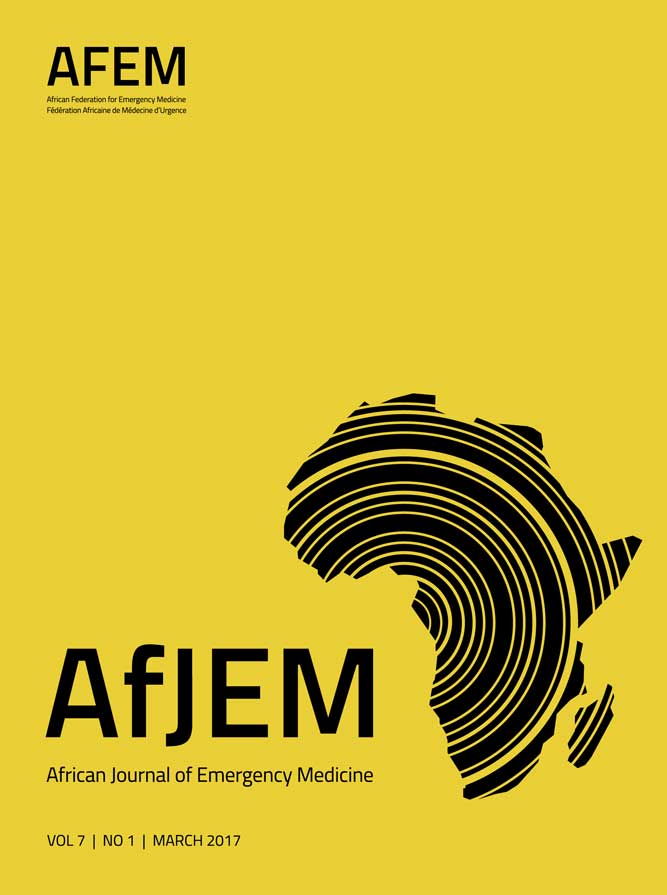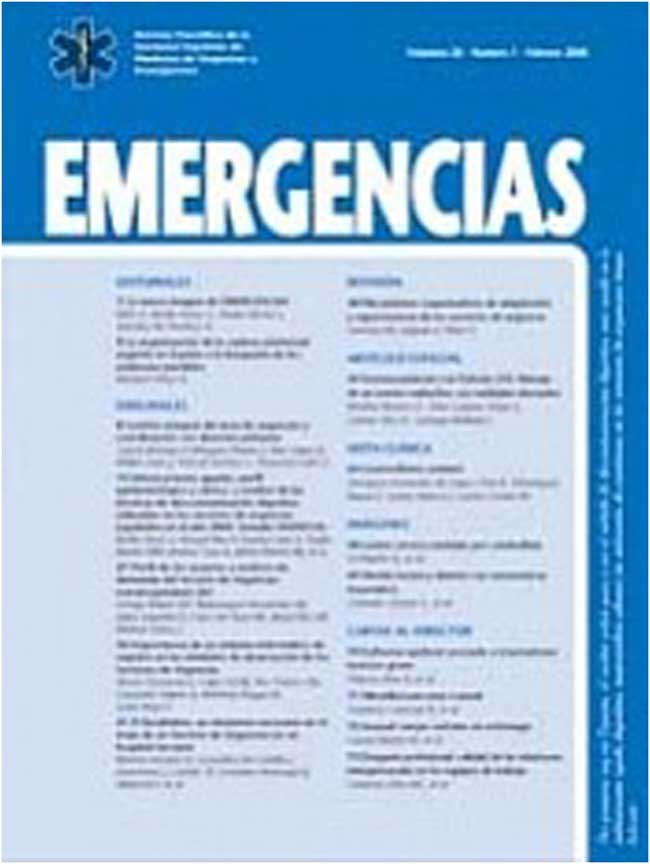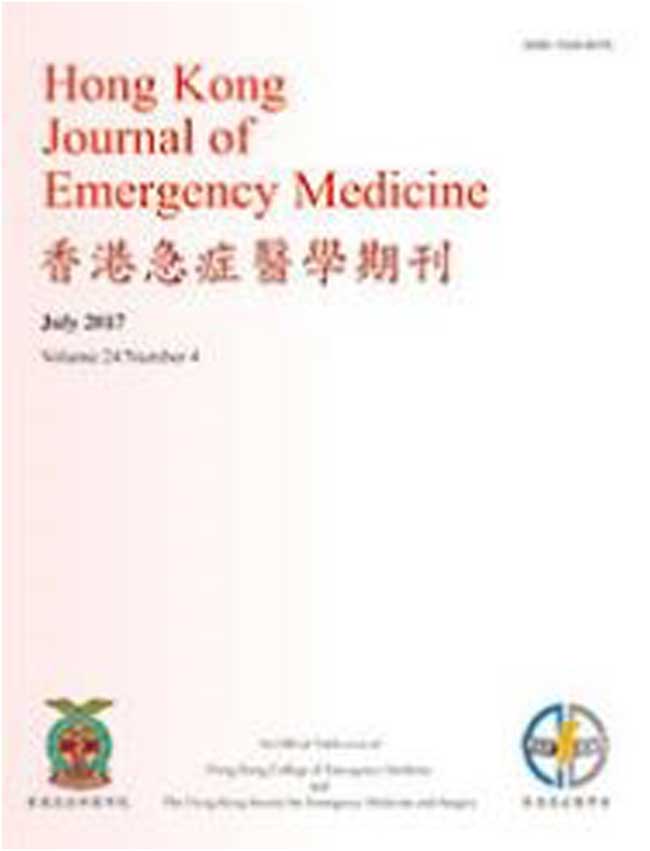Annals of Emergency Medicine

Official journal of the American College of Emergency Physicians
(The print version of this article has been scheduled for August 2018)
Influence of Shift Duration on Cognitive Performance of Emergency Physicians: A Prospective Cross-Sectional Study
Nicolas Persico, François Maltese, Cécile Ferrigno, Amandine Bablon, Cécile Marmillot, Laurent Papazian, Antoine Roch
Study objective: The relationship between tiredness and medical errors is now commonly accepted. The main objective of this study is to evaluate the cognitive performance of emergency physicians after a night shift of 14 hours (H14) and after a work shift of 24 hours (H24) and to compare it with tests performed after a rest night at home (H0).
Methods: Forty emergency physicians (19 staff physicians and 21 residents) were randomly evaluated at H0, H14, and H24. Four cognitive abilities (processing speed, working memory capacity, perceptual reasoning, and cognitive flexibility) were tested according to the Wechsler Adult Intelligence Scale and the Wisconsin Card Sorting Test.
Results: No cognitive ability was significantly altered after H14 compared with H0. Three of 4 cognitive abilities were impaired at H24 compared with H0: processing speed (11.2 [SD 2.7] versus 12.4 [SD 3.2]; mean difference=–1.2 [95% confidence interval –1.9 to –0.5]), working memory capacity (10.1 [SD 2.9] versus 11.6 [SD 3.0]; mean difference=–1.5 [95% confidence interval –2.2 to –0.8]), and perceptual reasoning (8.4 [SD 2.7] versus 10.6 [SD 2.8]; mean difference=–2.2 [95% confidence interval –3.4 to –1.0]). Cognitive abilities were not different between residents and staff physicians (except for perceptual reasoning) and were not affected by the amount of sleep during the night shift.
Conclusion: The cognitive abilities of emergency physicians were significantly altered after a 24-hour shift, whereas they were not significantly different from the rested condition after a 14-hour night shift. Limiting 24-hour shift work for emergency physicians should be considered and further evaluated.
How to cite this article:
Persico, N, Maltese, F, Ferrigno, C, et al. Influence of Shift Duration on Cognitive Performance of Emergency Physicians: A Prospective Cross-Sectional Study. 2017. DOI: https://doi.org/10.1016/j.annemergmed.2017.10.005
African journal of emergency medicine

The official journal of the African Federation for Emergency Medicine, the Emergency Medicine Association of Tanzania, the Emergency Medicine Society of South Africa, the Egyptian Society of Emergency Medicine, the Libyan Emergency Medicine Association, the Ethiopian Society of Emergency Medicine Professionals, the Sudanese Emergency Medicine Society, the Society of Emergency Medicine Practitioners of Nigeria and the Rwanda Emergency Care Association
Challenges relating to the inter-facility transport of high acuity paediatric cases
Vincent-Lambert C, Wade G
Afr J Emerg Med 2018;8(1):29-33
https://doi.org/10.1016/j.afjem.2017.12.001
Introduction: The motivation for this study came from anecdotal reports and observations that there was a potential need for improvement to the systems that support inter-facility transfers of high acuity paediatric cases between referring and receiving facilities in Johannesburg, South Africa. In this exploratory study, we formally document and describe challenges being experienced by members of the healthcare team in facilitating the inter-facility transport of high acuity paediatric cases.
Methods: A qualitative, explorative design was applied, making use of interviews with purposefully-identified role players involved in paediatric transportation and care. Verbatim transcripts from audio recorded interviews underwent content analysis to allow for the identification of common categories.
Results: Participants described a number of challenges, which included time delays, lack of qualified ambulance personnel, poor communication between role players, and lack of appropriate equipment.
Discussion: There are significant challenges experienced by members of the healthcare team with regard to inter-facility transport of high acuity paediatric and neonatal cases in Johannesburg, South Africa. Whilst we acknowledge the African context and resource constrained setting, health systems managers need to explore the feasibility of establishing dedicated and suitably resourced retrieval teams who specialise in the transfer of high acuity paediatric and neonatal patients in order to improve quality of care and overall patient outcomes in this population.
Reproduced with permission
Intravenous cefazolin plus oral probenecid versus oral cephalexin for the treatment of skin and soft tissue infections: a double-blind, non-inferiority, randomised controlled trial
Dawn Dalen, Amy Fry, Samuel G Campbell, Jeffrey Eppler, Peter J Zed Published Online First: 18 June 2018. doi: 10.1136/emermed-2017-207420
Objective: The purpose of our study was to determine if cephalexin 500 mg orally four times daily was non-inferior to cefazolin 2 g intravenously daily plus probenecid 1 g orally daily in the management of patients with uncomplicated mild–moderate skin and soft tissue infection (SSTI) presenting to the ED.
Methods: This was a prospective, multicentre, double dummy-blind, randomised controlled non-inferiority trial conducted at two tertiary care teaching hospitals in Canada. Patients were enrolled if they presented to the ED with an uncomplicated SSTI, and randomly assigned in a 1:1 fashion to oral cephalexin or intravenous cefazolin plus oral probenecid for up to 7 days. The primary outcome was failure of therapy at 72 hours. Clinical cure at 7 days, intravenous to oral medication transition admission to hospital and adverse events were also evaluated.
Results: 206 patients were randomised with 104 patients in the cephalexin group and 102 in the cefazolin and probenecid group. The proportion of patients failing therapy at 72 hours was similar between the treatment groups (4.2% and 6.1%, risk difference 1.9%, 95% CI −3.7% to 7.6%). Clinical cure at 7 days was not significantly different (100% and 97.7%, risk difference −2.3%, 95% CI −6.7% to 0.8%).
Conclusion: Cephalexin at appropriate doses appears to be a safe and effective alternative to outpatient parenteral cefazolin in the treatment of uncomplicated mild–moderate SSTIs who present to the ED.
Trial registration number NCT01029782; Results.
Emergencias
emergencias.portalsemes.org/English

Official Journal of the Spanish Society of Emergency Medicine
Profile of older patients attended in the emergency department after falls: a FALL-ER registry study of the magnitude of the problem and opportunities for improving hospital emergency care
Òscar Miró, Berenice Nayla Brizzi, Sira Aguiló, Xavier Alemany, Javier Jacob, Pere Llorens, Pablo Herrero Puente, Begoña González Ramón, Verónica Castro Jiménez, Victoria Torres Machado, Raquel Cenjor, Adriana Gil, Verònica Rico, Gemma Martínez Nadal, Montserrat Lázaro del Nogal, Francisco Javier Martín-Sánchez.
Cited: Miró O, Brizzi BN, Aguiló S, Alemany X, Jacob J, Llorens P, et al. Profile of older patients attended in the emergency department after falls: a FALL-ER registry study of the magnitude of the problem and opportunities for improving hospital emergency care. Emergencias 2018;30:231-240.
Objective: To profile patients aged 65 years or older who are attended in a hospital emergency department after falls. To describe the falls, their severity, and factors relevant to recommended preventive measures.
Methods: The FALL-ER is a multipurpose, multicenter prospective registry of a systematically described cohort of patients aged 65 years or older attended in 5 hospital emergency departments on 52 days of the same year. We collected data on 68 independent variables. Patients were classified according to whether they had received recommendations related to preventing falls in any of the following categories: exercise, education on fall prevention, referral to a specialist or changes in medication.
Results: A total of 1507 patients or carers were interviewed (93.6% of the 1610 patients in the registry). The cohort was of advanced age and had high rates of comorbidity, polypharmacy, and history of geriatric syndromes. The majority of falls occurred during the day and in the patients home. Half the falls were not witnessed. Forty-eight percent of the patients reported fear of falling, 22% had acute functional impairment, 16% were admitted, and 0.6% died in the hospital. Recommendations directed to preventing falls were received by 509 (33.8%) cases. Loss of hearing acuity, self-reported cognitive impairment, emergency first aid at the site of the fall, fear of falling again, acute functional impairment, and hospitalization were associated with a greater likelihood of receiving recommendations for preventing falls. Loss of visual acuity was associated with a lower likelihood of receiving recommendations.
Conclusions: Only a third of elderly patients attended in an emergency department after falls receive recommendations that target preventing further falls. Certain patient and fall characteristics are associated with a greater likelihood of receiving such recommendations.
Keywords: Falls. Aged. Geriatrics. Emergency health services. Prevention.
Hong Kong Journal of Emergency Medicine

Official Journal of the Hong Kong College of Emergency Medicine
Radiological features of body packers: An experience from a regional accident and emergency department in close proximity to the Hong Kong International Airport
Ho Kai Patrick Tsang, Cheuk Kei Kathy Wong, Oi Fung Wong, Wing Lun William Chan, Hing Man Ma and Chau Hung Albert Lit
Introduction: To determine the association between both abnormal individual vital signs and abnormal vital sign groups in the emergency department, and undesirable patient outcomes: hospital admission, medical emergency team calls and death.
Method: We undertook a prospective cohort study in a tertiary referral emergency department (February–May 2015). Vital signs were collected prospectively in the emergency department and undesirable outcomes from the medical records. The primary outcomes were undesirable outcomes for individual vital signs (multivariate logistic regression) and vital sign groups (univariate analyses).
Results: Data from 1438 patients were analysed. Admission was associated with tachycardia, tachypnoea, fever, ≤1 abnormal vital sign on admission to the emergency department, ≤1 abnormal vital sign at any time in the emergency department, a persistently abnormal vital sign, and vital signs consistent with both sepsis (tachycardia/hypotension/abnormal temperature) and pneumonia (tachypnoea/fever) (p<0.05). Medical emergency team calls were associated with tachycardia, tachypnoea, ≥1 abnormal vital sign on admission (odds ratio: 2.3, 95% confidence interval: 1.4–3.8), ≥2 abnormal vital signs at any time (odds ratio: 2.4, 95% confidence interval: 1.2–4.7), and a persistently abnormal vital sign (odds ratio: 2.7, 95% confidence interval: 1.6–4.6). Death was associated with Glasgow Coma Score ≤13 (odds ratio: 6.3, 95% confidence interval: 2.5–16.0), ≥1 abnormal vital sign on admission (odds ratio: 2.6, 95% confidence interval: 1.2–5.6), ≥2 abnormal vital signs at any time (odds ratio: 6.4, 95% confidence interval: 1.4–29.5), a persistently abnormal vital sign (odds ratio: 4.3, 95% confidence interval: 2.0–9.0), and vital signs consistent with pneumonia (odds ratio: 5.3, 95% confidence interval: 1.9–14.8).
Conclusion: Abnormal vital sign groups are generally superior to individual vital signs in predicting undesirable outcomes. They could inform best practice management, emergency department disposition, and communication with the patient and family.
Keywords: Emergency department, vital signs





